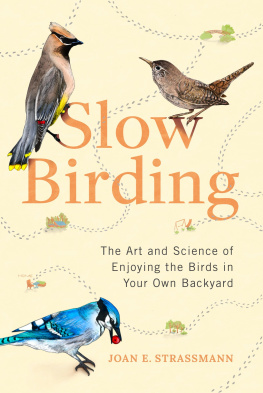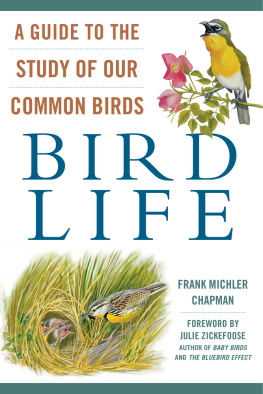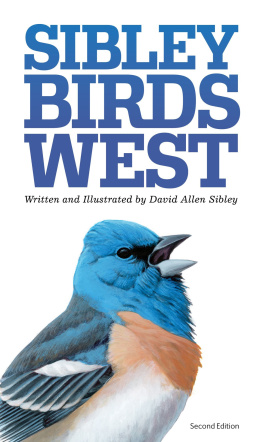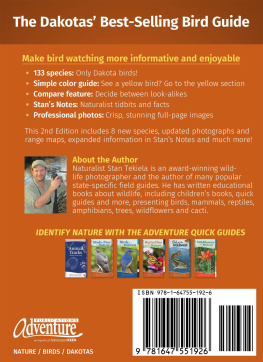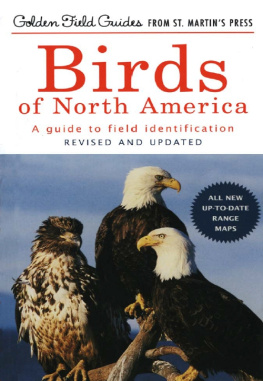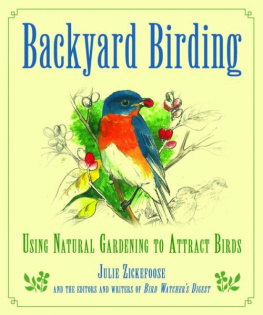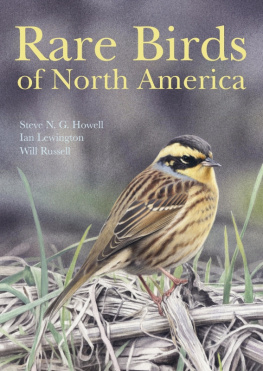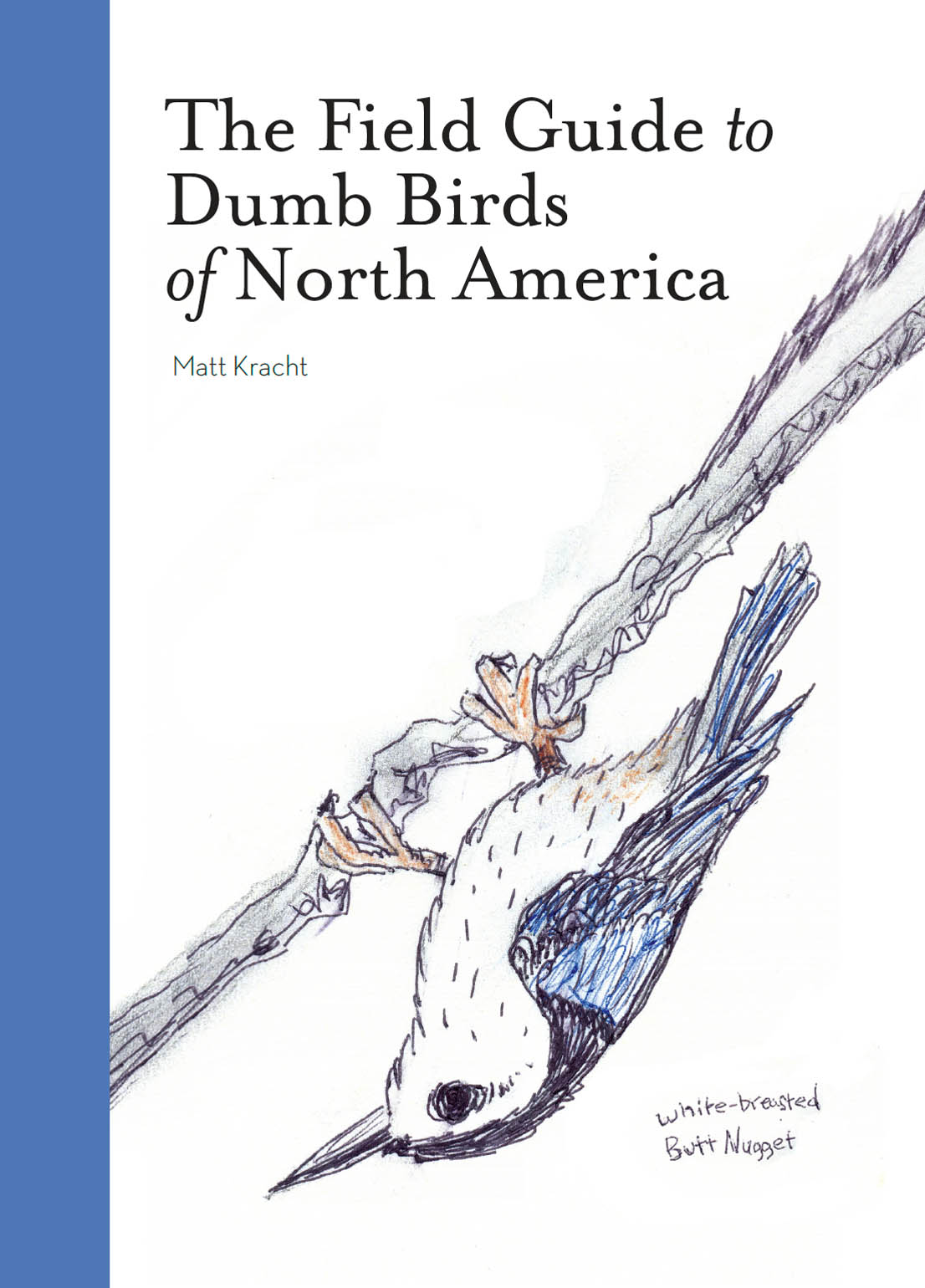

Copyright 2019 by Matthew Kracht
All rights reserved. No part of this book may be reproduced in any form without written permission from the publisher.
ISBN 978-1-4521-7739-7 (epub, mobi)
Library of Congress Cataloging-in-Publication Data available.
ISBN 978-1-4521-7403-7 (paperback)
Design by Jenna Huerta
Chronicle Books LLC
680 Second Street
San Francisco, CA 94107
www.chroniclebooks.com
Contents
Introduction
Quite a few people have asked me how I came to write about birds, and this is the story I tell them:
I was first introduced to bird watching when I was in the fourth grade. My teacher was an amateur ornithologist and a total nut for birds. Our class went on bird watching field trips. We read about birds. We watched nature documentaries about birds. And we each had to write a Bird Report about a specific bird over Christmas break.
I argued for the black-capped chickadee (I liked them, and theyre everywhere in the Pacific Northwest where I live) but was ultimately assigned the golden-crowned kinglet. These things are nearly impossible to spot: theyre tiny, they hang out in the deep woods, and they dont want to be anywhere near a fourth grader.
I spent countless hours in the cold, dripping November woods and the knee-high grass of marshy fields with the dew soaking through my shoes trying to spot a golden-crowned kinglet so I could write my observations for the report. I never saw one. Maybe I saw one once in a tree. But it might have been a pinecone. Impossible to tell at that distance.
The Bird Report was the first real report I ever had to write. It was also my first experience with crushing academic anxiety. On the last day of Christmas vacation, I cried because I didnt know how to begin writing about a bird I had never seen in reality. Vacation was over, there was no time left, and I was paralyzed by impending failure. In the end, my mom made me hunker down and do it anyway.
When I was finished, I had a blue cardboard report binder titled, Bird Report, which held the meager collection of handwritten pages and drawings that I was able to eke out in one long evening of despair spent with an encyclopedia and a field guide borrowed from the library. It was C- material at best.
Fast-forward three and a half decades. Life is great and Im taking a nice New Years Day walk with my wife along the shore of the Puget Sound near our home. The air is crisp, the water is lapping at the shore, the wind is rustling in the trees, and the sun is shining. Then I see itnot three feet away in the bushes at the edge of the woodsunmistakable: The Golden Crowned Kinglet! I couldnt believe it. It was literally within arms reach.
I froze and pointed it out to my wife. Look, I whispered loudly, a golden-crowned kinglet!
I carefully pulled my phone from my pocket to snap a picture of itproof of achievement for an assignment I suddenly realized had felt incomplete for nearly forty years. But that tiny little fucker would not stop jumping from spot to spot, barely landing in the branches of a bush for a split second before it flitted away behind a leaf or into some tall grass, each time before I could find it and my camera could focus on it. It was like trying to capture photographic evidence of Bigfoot.
Pretty, my wife said when it finally flew away into the trees, and we walked on.
You little son of a bitch, I thought. The rest is history.

Section 1:
How to use this book
If you are new to bird watching, you may benefit from familiarizing yourself with this guide and its different parts, especially the part with the birds in it. In addition to a drawing of the bird, each entry includes a description of physical appearance and notes on its behavior, calls, and general disposition. These are intended to aid not only with proper identification, but to help you on your way to a deeper understanding and appreciation of how truly horrible these tiresome little creatures are.
Beyond the descriptions of birds, you will find information in this book covering many topics of interest to the bird watcher, including the history of bird watching, methods of identification, where to look for birds, tips for bird watching, seasonal bird watching and, if you are inclined to follow your new obsession to an even deeper place, how to observe and record birds in your own journal.
Additionally, in the back you will find maps pertaining to bird regions of North America and seasonal migratory patterns across the continent, as well as illustrations and descriptions of the different kinds of bird feeders that attract birds to yards.
If you are like me, the observation of birds may well become a lifetime distraction and ultimately provide you with countless hours of profound irritation.
If, on the other hand, you are already an experienced bird watcher, Im sorry.
The Difference Between Birding and Bird Watching
Until recently there was no debate over the difference between the terms, because rational people generally agreed that you cant just turn a noun into a verb just because you feel like it, and thus the terms birding and birder did not exist. Sadly, those days are over.
Exactly how and when the chain of events leading to the present debate was set in motion is impossible to say, but it almost certainly started with some early 19th century drip staring at a tree for hours with his mouth agape. When a passing acquaintance asked him what he was up to, he probably said, What? Oh, I was watching a bird, and was subsequently ridiculed for wasting time watching a common bird doing bird things. This no doubt led him to decide, I had better say I am bird watching the next time, because that sounds like Im doing something serious.
Fast-forward a hundred years or so to a drawing room after a dinner party, and we can only assume that essentially the same language evolution happened again. Someone said approvingly to the host, Those are some splendid binoculars! Perfect for safari, Id say. I didnt know you hunted, old boy! To which this host surely must have stammered out, I... theyre for, um, bird watching, and then, to make it sound a bit more dangerous, and to hopefully dodge the loss of his big-game-hunting peers newfound admiration, he quickly added, that is to say, birding. Yes, ha ha, Im a big birder. This was no doubt followed by an awkward silence and the subject was quickly changed to who would care for a brandy.
During the 20th century the observation of birds as a pastime grew rapidly in popularity and became a hobby enjoyed casually even by common people.
At some point a bunch of Type As decided to make the watching of birds even more unenjoyable by declaring that the whole point of it was going to be who can see the most birds in the course of their overcompetitive lifetime.
Many birders feel that bird watching is a passive activity, whereas what they do (rushing around trying to see every single bird and write it down) is an active activity, which is why it needs its own more active verb-noun to describe it. Because theyre not passively watching birds, theyre actively birding birds.
Next page

